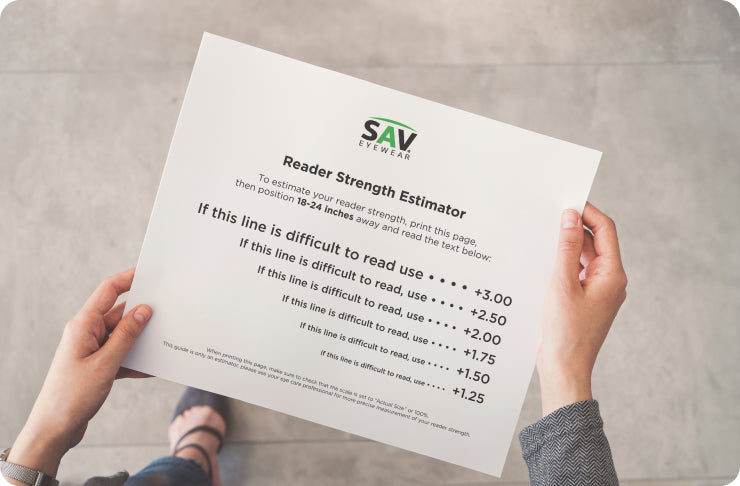What Power Do I Need?
Your Guide to Choosing Reading Glasses
Are you worried about your eyesight? It's not about aging but about the need for reading glasses to enjoy your favorite authors' works. Finding the right pair can be daunting if you're unsure of what to look for. This article aims to provide essential tips to help you make an informed decision when selecting your reading glasses.
Let's get started.

The need for reading glasses arises from presbyopia, a condition where your eyes lose their ability to focus up close. This occurs when the natural lens of your eye stiffens, making it challenging to see nearby objects clearly.
While presbyopia is most common in individuals over 40, it can also affect younger people. It's crucial to recognize that presbyopia is a natural process of aging, and using reading glasses is the recommended solution.
Reading glasses address presbyopia by adjusting your eye's focal point closer to you, enhancing your ability to see objects up close.
When choosing reading glasses, the general rule is that the stronger the lenses, the closer you'll be able to focus. This means that reading glasses are classified based on their strength, measured in diopters or reading power.
Reading glasses typically range from +1.25 diopters to +3.00 diopters, increasing in increments of +0.25 diopters, with lens strength progressing from lower to higher diopters.

Finding the Right Power for
Your Reading Glasses
Having understood the essentials of reading glasses, it's
crucial to determine how to select the perfect pair.
Using the Diopter
Reading Test
The diopter reading test is the simplest and most widely used method to determine the strength of your reading glasses. Better yet, it's a test you can conduct yourself right now. The test chart features a series of printed sentences alongside a diopter scale.
At the top of the chart, the text size is very small, gradually increasing in subsequent lines. By referencing the diopter scale, you'll observe the reading power increasing in descending order. The sequence is as follows:

To conduct the test, download and print the
diopter chart on paper. Position the chart
approximately 14 to 18 inches away from your face.
Start reading the sentences from the top row. If you struggle to focus and read the sentences clearly, move down to the next row. Repeat this process until you locate a sentence that you can read comfortably.
Once you've identified a readable sentence, refer to the diopter scale adjacent to it. This number indicates the strength of reading glasses required for your eyes.

Try on SAV Eyewear In-Store to Confirm Your Reading Glass Power
Still not certain what power you need? Go try a few on! Take your favorite book and go to one of over 4 thousand stores where you can find SAV Eyewear in the U.S. and Canada.
Use our Store Locator to find the closest location to try on our reading glasses and sunglass readers to confirm your power. Many locations carry our Magnifinder (registered mark), an easy and accurate method for you to select the proper magnification for your reading glasses.
